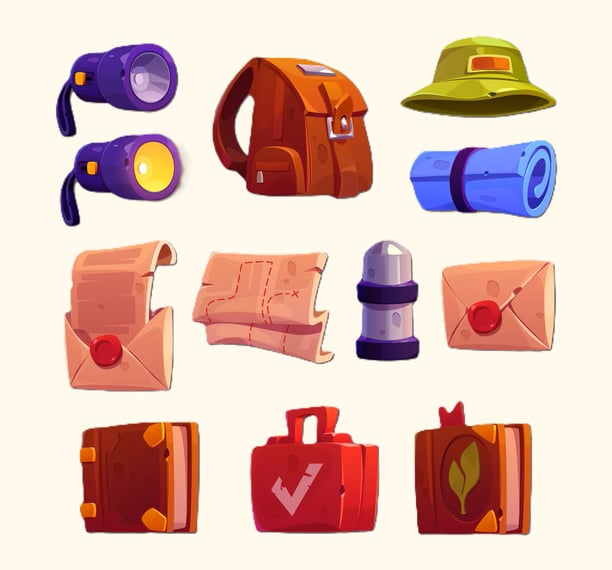Escape Routes
Identify multiple safe paths away from high-risk areas and practice using them with family. Having multiple escape routes from high-risk areas is a critical survival strategy in times of conflict, natural disasters, or emergencies. Practising these routes with your family ensures everyone knows how to act quickly and effectively, even under pressure. Below is a detailed explanation of why and how to plan escape routes and practice them.
HAVE AN EMERGENCY PLAN
12/21/20243 min read
Escape Routes
Identify multiple safe paths away from high-risk areas and practice using them with family. Having multiple escape routes from high-risk areas is a critical survival strategy in times of conflict, natural disasters, or emergencies. Practising these routes with your family ensures everyone knows how to act quickly and effectively, even under pressure.
Below is a detailed explanation of why and how to plan escape routes and practice them.


1. Importance of Identifying Multiple Safe Paths
Why Multiple Paths?
Unpredictable Situations: Roads or exits may be blocked due to traffic, debris, military checkpoints, or other unforeseen circumstances.
Avoiding Bottlenecks: High-risk areas can become congested during evacuations. Alternative routes help bypass delays.
Safety Assurance: If one route becomes unsafe or compromised, you have other options.
Benefits of Safe Paths
Reduced Panic: Having a clear plan reduces the stress of finding a way out during a crisis.
Quick Decision-Making: Pre-identified routes allow you to act immediately without hesitation.
Family Coordination: Everyone knows where to go and how to get there, reducing confusion.
2. Steps to Identify Safe Paths
A. Assess Your Environment
Map Your Area: Use physical or digital maps to mark key locations like home, work, schools, and high-risk zones.
Locate Exits: Identify all possible exits from your immediate surroundings (e.g., doors, windows, stairwells).
Note Hazards: Be aware of potential dangers like bridges, tunnels, flood-prone areas, or conflict zones.
B. Plan Multiple Routes
Primary Route: The fastest and most direct path to safety.
Secondary Route: A backup in case the primary route is blocked or unsafe.
Tertiary Route: A longer but reliable path that avoids high-risk areas entirely.
C. Consider Transportation Options
On Foot: Identify paths accessible by walking in case vehicles are unavailable or roads are blocked.
Vehicle-Friendly: Plan routes suitable for cars or bikes that avoid heavy traffic or dangerous zones.
Public Transport: If applicable, know nearby bus or train stations that may assist evacuation.
D. Mark Safe Zones
Temporary Shelters: Identify places like community centers, schools, or religious institutions that can provide temporary refuge.
Meeting Points: Set specific locations to regroup if family members get separated.
3. Practicing Routes with Your Family
Why Practice?
Builds Familiarity: Everyone learns the paths, making navigation instinctive in a crisis.
Identifies Challenges: Practicing helps uncover obstacles or flaws in the plan.
Instills Confidence: Familiarity with routes reduces panic and builds trust in the plan.
How to Practice:
Simulate Different Scenarios: Practice routes during the day and at night, and in varying weather conditions.
Time the Routes: Understand how long it takes to reach safe zones, accounting for potential delays.
Test with Family Members: Ensure everyone, including children and elderly family members, is comfortable with the paths.
Use Backpacks or Supplies: Simulate real conditions by carrying essential items like go-bags or first-aid kits.
Drill Communication: Practice using hand signals or simple verbal commands to stay coordinated.
4. Additional Tips for Safe Path Planning
A. Keep Updated
Monitor Changes: Road closures, weather conditions, or new hazards may require route adjustments.
Stay Informed: Use local news, apps, or radio for updates on road safety and high-risk areas.
B. Blend In
Avoid Drawing Attention: Stick to less crowded or less visible paths when possible to reduce the risk of confrontation.
Use Natural Cover: Utilize walls, trees, or vegetation to stay hidden if required.
C. Pack Essentials
Go-Bags: Keep a lightweight, pre-packed bag with survival items like water, snacks, maps, flashlights, and first aid supplies.
Personal Identification: Ensure every family member has identification and contact information.
D. Prepare for Detours
Be ready to adapt if a route becomes unsafe. Familiarity with the general layout of the area helps in creating on-the-spot alternatives.
5. Mistakes to Avoid
Relying on One Route: Overconfidence in a single path can leave you stranded if it’s inaccessible.
Neglecting Practice: A plan is ineffective if no one remembers the details or knows how to execute it.
Overlooking Vulnerabilities: Failing to consider children, elderly, or disabled family members in route planning.
Ignoring Environmental Factors: Forgetting to account for weather, terrain, or other challenges specific to your area.
Multiple Options: Always have at least three escape routes planned.
Family Involvement: Practice routes together to ensure everyone knows what to do.
Adaptability: Be prepared to adjust your plans if conditions change.
Focus on Safety: Choose paths that minimize risk and lead to secure destinations.
By identifying and practising safe paths, you reduce the chance of confusion or panic during emergencies, ensuring your family can evacuate swiftly and safely.






